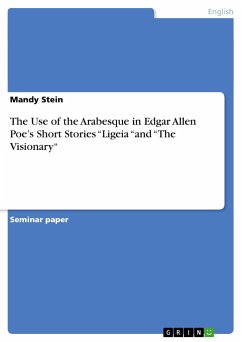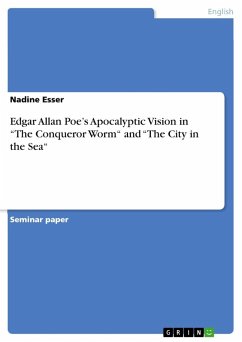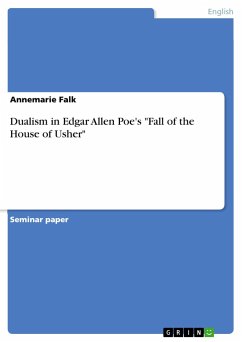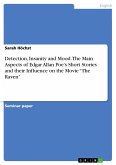Seminar paper from the year 2007 in the subject American Studies - Literature, grade: 2,3, University of Göttingen, language: English, abstract: "And the raven, never flitting, still is sitting, still is sittingOn the pallid bust of Pallas just above my chamber door;And his eyes have all the seeming of a demon that is dreaming,And the lamp-light o'er him streaming throws his shadow on the floor;And my soul from out that shadow that lies floating on the floorShall be lifted -- nevermore!" (Poe 28)These famous lines are from an often quoted poem by Edgar Allen Poe, one of the mostfamous American Authors of all time. He was a writer of all kinds of literary genre butwell know for his mystery or detective stories. Who does not know "The Tell-Tale Heart"or was shocked by the horror in "The Fall of the House of Usher"? Poe was a magnificentwriter of Gothic Novels and is still today a well-known and well referred author when itcomes to horror or even science fiction. His stories and plays are often adopted for thetheatre and also Hollywood is incapable of not portraying his well-known horror stories.Next to his famous works Poe, like many authors of the 19th century, wrote arabesquestories. Although there is his known Collection of Arabesque and Grotesque Stories from1840, it is unknown to many that he followed truly an oriental writing tradition and setfootprints into this new genre like Johnson, Moore, Byron and others and developed thearabesque term to a new limit.But the question is if these stories are really written in the oriental tradition. Many criticsare unsure up to this day if Poe really wanted to write in the arabesque or grotesquetradition and if he was aware of the fact that these two terms are of different backgroundand do not, like many people think, just refer to the same definition.This term paper will focus on Poe's use of the arabesque tradition in his stories "TheVisionary" from 1834 and "Ligeia" from 1838. It is the aim to find out parallels betweenboth stories regarding the oriental tradition.Therefore I will first explain the term Arabesque because there are many versions of whatan arabesque could be: a style of writing, the writing itself, a wall paper etc. Also I willfocus on the term "grotesque" because this term is often, especially when used withreference to Poe's literature, mixed up with the term `arabesque`.And at last I will have a closer look on the use of the term arabesque in Poe's storiesbecause, as I said before, he wrote more tales of the grotesque and the arabesque than thetwo I am going to refer to.[...]
Hinweis: Dieser Artikel kann nur an eine deutsche Lieferadresse ausgeliefert werden.
Hinweis: Dieser Artikel kann nur an eine deutsche Lieferadresse ausgeliefert werden.







